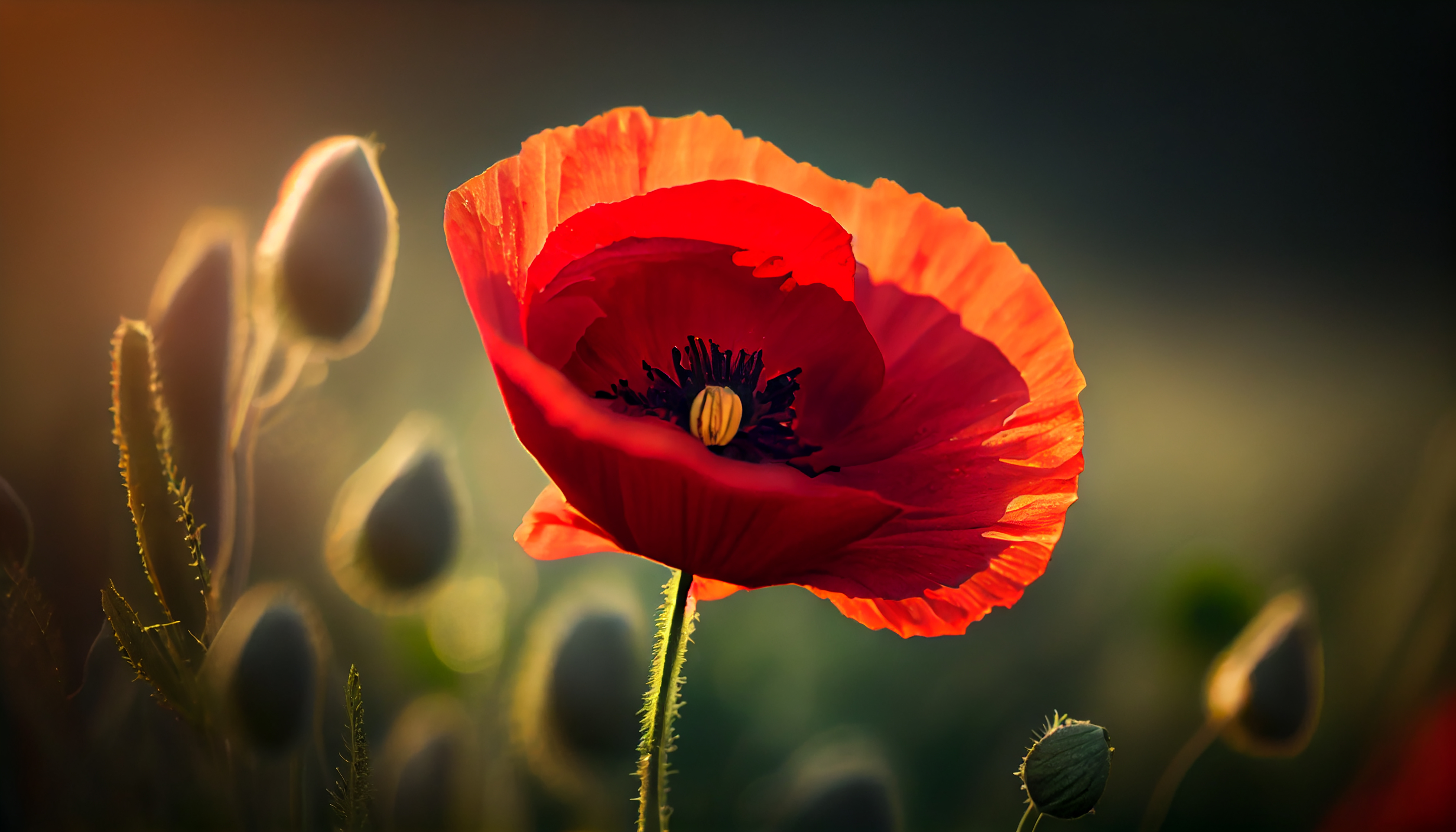
Poppy Day: Honoring Remembrance and the Symbol of the Poppy
Poppy Day, also known as Remembrance Day or Armistice Day, is observed on November 11 each year as a tribute to the sacrifices made by military service members in conflicts past and present. The day is rooted in history and remembrance, marking the anniversary of the end of World War I, when an armistice was signed on November 11, 1918, effectively bringing the brutal conflict to a close. Today, it is a powerful reminder of the costs of war and a call to remember those who gave their lives to serve.
The Origins and Symbolism of the Poppy
The red poppy is the enduring symbol of Remembrance Day. This iconic flower became associated with remembrance thanks to In Flanders Fields, a poem written by Lieutenant Colonel John McCrae, a Canadian soldier who served in World War I. McCrae described how red poppies grew among the graves of soldiers in Flanders, a war-torn region of Belgium. Poppies have since come to symbolize both the bloodshed of war and the resilience of life, representing remembrance and hope for peace.
The tradition of wearing a poppy to honor fallen soldiers began in 1921 and quickly spread across Commonwealth countries, including the United Kingdom, Canada, Australia, and New Zealand. Today, millions of people wear red paper poppies in early November to show respect and raise funds for veterans and their families.
The Significance of Remembrance Day Observance
Remembrance Day serves as a solemn reminder of the cost of conflict, honoring the courage and sacrifice of soldiers who served in wars and peacekeeping missions. Many countries observe a moment of silence at 11:00 AM on November 11, symbolising the armistice signed at the “eleventh hour of the eleventh day of the eleventh month.” This two-minute silence is a simple yet profound way to pause and reflect, honoring those who made the ultimate sacrifice.
Observing Poppy Day in Different Communities
The commemoration of Poppy Day varies by community, reflecting the unique ways people choose to honor the day and remember those lost.
In Nursing Homes and Senior Communities
For many elderly residents, Remembrance Day holds personal significance. Some may have served in the armed forces or have family members who did, while others lived through wartime eras and remember the impact on daily life. Nursing homes often incorporate special ceremonies, moments of silence, and activities to help residents reflect, share memories, and connect with each other on this important day. These ceremonies can include readings from In Flanders Fields, singing wartime songs, or engaging in crafts like poppy-making to bring comfort and honor to the observance.
In Schools and Early Years Settings
In early years settings, such as nurseries, Remembrance Day is often introduced in a gentle, age-appropriate way. Teachers and caregivers may use the day to help children understand themes of kindness, gratitude, and remembrance. Simple activities, like crafting poppies, listening to stories, or planting flowers, help young children connect to the day’s purpose without the complexities of discussing war. The day can become an opportunity to learn about kindness and appreciating those who help others.
The Lasting Impact of Poppy Day
As communities come together to honor Poppy Day, we are reminded of the sacrifices that allow us to live in peace today. Whether through moments of silence, heartfelt activities, or sharing stories, Poppy Day unites people across generations in reflection, gratitude, and hope for a peaceful future.
From all of us at Willing Care, we wish you a meaningful and heartfelt World Poppy Day. May this day of remembrance bring us closer to a world where peace blooms as beautifully as the red poppy.

